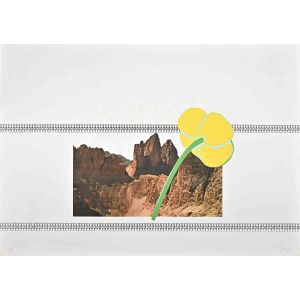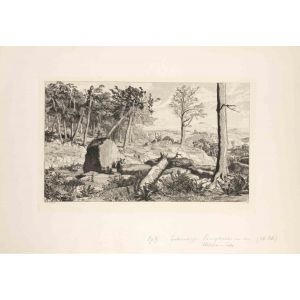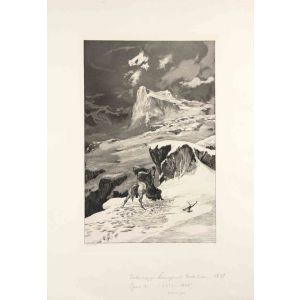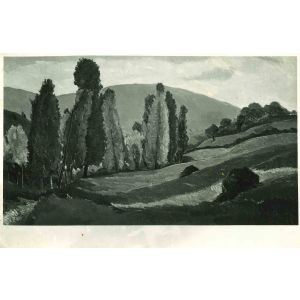Woman Portrait
Woman Portrait is a splendid lithograph engraved by Jacques Marie Gaston Onfroy de Bréville , known by the pen name Job after his initials (1858 - 1931).
The state of preservation of the artwork is excellent.
Sheet Dimension: 28.5 x 19.4 cm
This original lithograph represents a sublime woman portrait. The name of the woman "Marie Setie", on The top center.
Not signed.
Woman Portrait is a splendid lithograph engraved by Jacques Marie Gaston Onfroy de Bréville , known by the pen name Job after his initials (1858 - 1931 ).
The state of preservation of the artwork is excellent.
Sheet Dimension: 28.5 x 19.4 cm
This original lithograph represents a sublime woman portrait. The name of the woman "Marie Setie", on The top center.
Not signed.
Jacques Marie Gaston Onfroy de Bréville was a French artist and illustrator. His father opposed his entry to thé École des beaux-arts after graduating from the Collège Stanislas . He therefore joined the French army, but returned to Paris in 1882. In the intervening period, he maintained a keen taste for military, patriotic and nationalistic subjects. He finally joined the École des beaux-arts and exhibited at the 1886 'Salon des artistes français', receiving a mixed reception. He therefore began a career as an illustrator, contributing caricatures to La Caricature and to La Lune .
However, he is best known for his illustrations for children's books, most frequently for texts by Georges Montorgueil . His major colour compositions contributed to the cult of 'heroes of the nation' such as Napoleon I and Joachim Murat . Several of his illustrations appear in La Vieille Garde impériale (The Old Imperial Guard ), published in 1932 by Alfred Mame and fils de Tours. His eye for detail can be seen in L'Épopée du costume militaire français - even in works intended for children, he tried to reproduce uniforms with extreme precision.
His best known works are Murat, Le Grand Napoléon des petits enfants, Jouons à l'histoire, Louis XI, Napoléon, Bonaparte and Les Gourmandises de Charlotte. He also illustrated the life of George Washington and was well known in the USA. He was a Sociétaire of the 'humoristes' and exhibited with the Incoherents . His studio has been reconstructed at the musée de Metz .
His father opposed his entry to thé École des beaux-arts after graduating from the Collège Stanislas . He therefore joined the French army, but returned to Paris in 1882. In the intervening period, he maintained a keen taste for military, patriotic and nationalistic subjects. He finally joined the École des beaux-arts and exhibited at the 1886 'Salon des artistes français', receiving a mixed reception. He therefore began a career as an illustrator, contributing caricatures to La Caricature and to La Lune .
However, he is best known for his illustrations for children's books, most frequently for texts by Georges Montorgueil . His major colour compositions contributed to the cult of 'heroes of the nation' such as Napoleon I and Joachim Murat . Several of his illustrations appear in La Vieille Garde impériale (The Old Imperial Guard ), published in 1932 by Alfred Mame and fils de Tours. His eye for detail can be seen in L'Épopée du costume militaire français - even in works intended for children, he tried to reproduce uniforms with extreme precision.
His best known works are Murat, Le Grand Napoléon des petits enfants, Jouons à l'histoire, Louis XI, Napoléon, Bonaparte and Les Gourmandises de Charlotte. He also illustrated the life of George Washington and was well known in the USA. He was a Sociétaire of the 'humoristes' and exhibited with the Incoherents . His studio has been reconstructed at the musée de Metz .











































Validate your login
Sign In
Create New Account